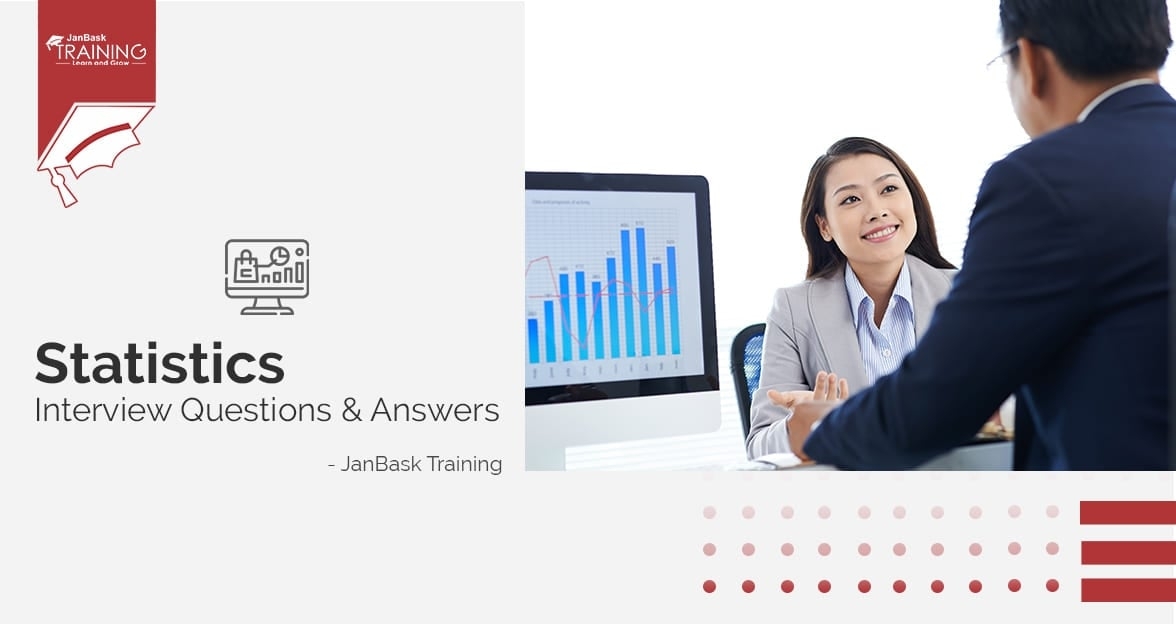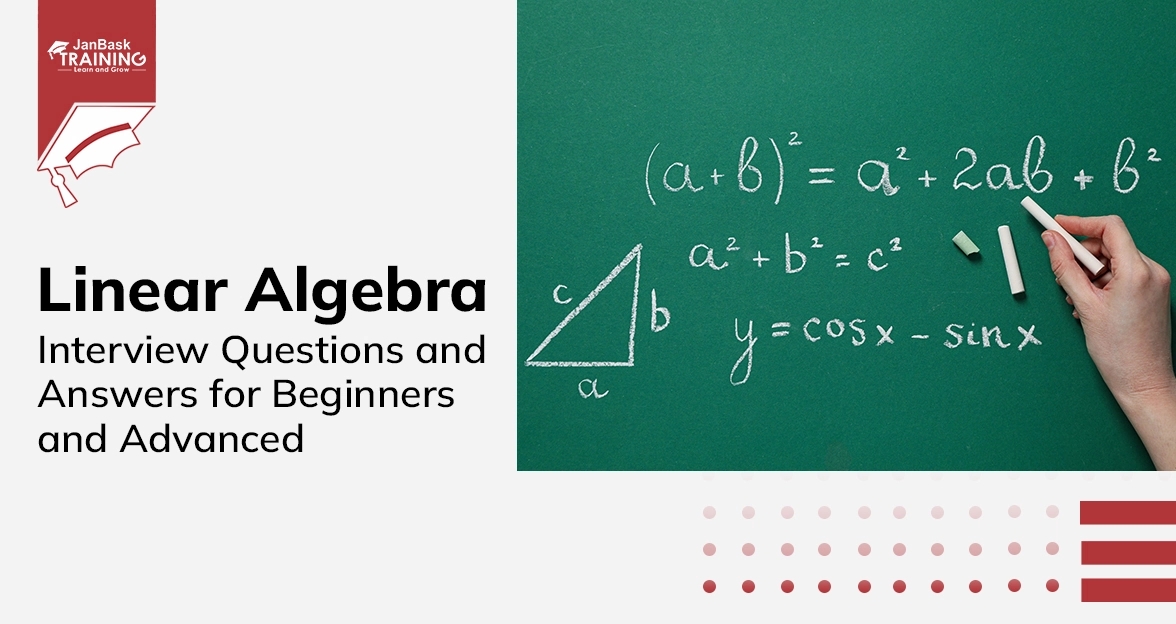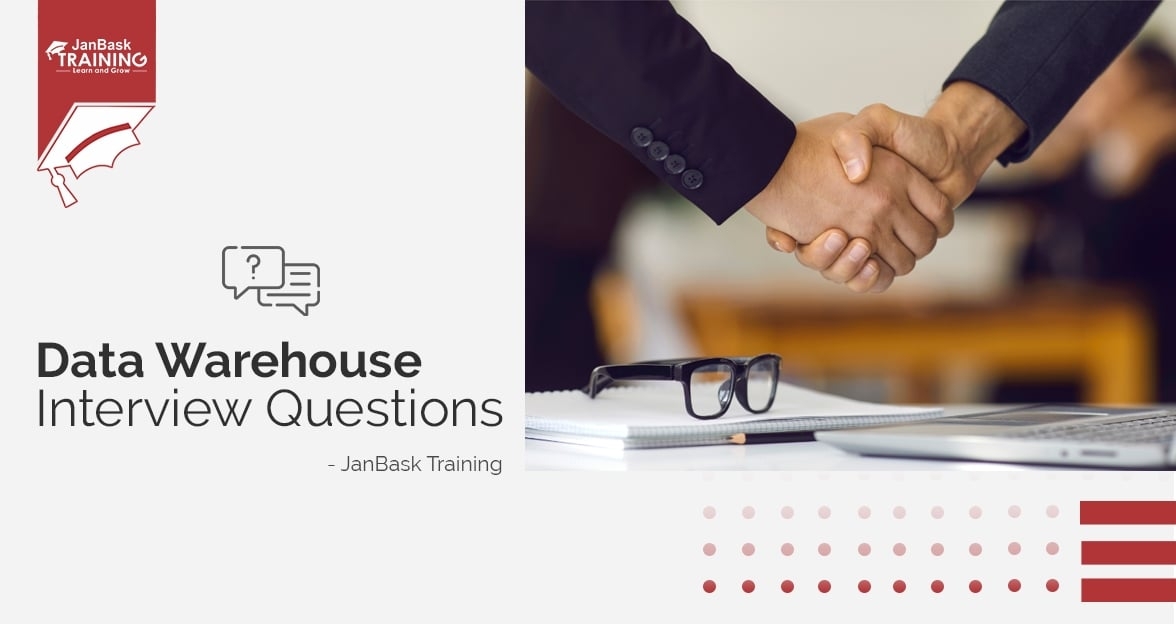 Grab Deal : Upto 30% off on live classes + 2 free self-paced courses - SCHEDULE CALL
Grab Deal : Upto 30% off on live classes + 2 free self-paced courses - SCHEDULE CALL

 Grab Deal : Upto 30% off on live classes + 2 free self-paced courses - SCHEDULE CALL
Grab Deal : Upto 30% off on live classes + 2 free self-paced courses - SCHEDULE CALL

Linear and logistic regression are fundamental data science techniques that help understand relationships with data by providing predictive modeling capabilities. Mastering linear and logistic techniques can help beginners by enhancing their fundamental knowledge of statistical modeling.
Today's linear and logistic interview questions and answers for data science can help you with foundational knowledge and career advancement in data science.
A: Linear regression is a math tool that determines how one thing depends on another. For example, how does a student's study time affect their test score? Linear regression can be classified into two types: simple linear regression and multiple linear regression.
The simple linear regression looks at just one aspect, like study time, while the multiple one checks out more than one aspect, like study time and sleep hours.
A: Lasso is the top choice for variable selection. It works by shrinking the data towards a point and zeroing out less important variables through a penalty, which helps us focus on the most meaningful factors for our model.
A: Using Z-scores in regression addresses the question of interpretability. Since all features will have similar means and variances, the magnitude of the coefficients will determine the relative importance of these factors towards the forecast.
Indeed, in proper conditions, these coefficients will reflect the correlation coefficient of each variable with the target. Further, that these variables now range over the same magnitude simplifies the work for the optimization algorithm.
A: The Wald test, also called the Wald Chi-Squared Test, helps decide if the variables in a model are significant. It's handy in logistic regression because it tells us if our independent variables make a difference in predicting outcomes. We can then drop the ones that only matter a little without hurting the model.
The R2 value in linear regression allows us to quickly compare models with and without certain variables. However, in logistic regression, we use a different method called the Maximum Likelihood Estimate, which doesn't work well for this comparison. That's where the Wald test comes in handy.
A: Linear regression is the most representative "machine learning" method for building models for value prediction and classification from training data. It offers a study in contrasts:
Linear regression has a beautiful theoretical foundation, yet, in practice, this algebraic formulation is generally discarded in favour of faster, more heuristic optimization.
By definition, linear regression models are linear. This provides an opportunity to witness their limitations and develop clever techniques to generalize to other forms.
Linear regression simultaneously encourages model building with hundreds of variables and regularization techniques to ensure that most of them are ignored.
A: Linear relationships are easier to understand than nonlinear ones and are grossly appropriate as a default assumption without better data. Many phenomena are linear, with the dependent variable growing roughly proportionally with the input variables:
The income grows roughly linearly with the amount of time worked.
The price of a home grows roughly linearly with the size of the living area.
People's weight increases roughly linearly with the amount of food eaten.
Linear regression does excellent when it tries to fit data that, in fact, has an underlying linear relationship. But, generally speaking, no interesting function is perfectly linear. Indeed, an old statistician's rule states that if you want a function to be linear, measure it at only two points.
A: To find that best-fit line, we follow these steps:
First, we collect some data points that show how things are related, like how study time is linked to test scores.
Then, we plot those points on a graph to see the pattern.
Next, we do some math to draw the line closest to all those points. This line helps us make good guesses about one thing based on another.
Once we've got that line, we use it to predict what one thing might be when we know the other. For example, if we know how much someone studied, we can guess their test score.
We check how good our guesses are by using some numbers that tell us how accurate our line is.
If our line isn't great, we can tweak it by adding or removing things until it fits better.
Then, we keep using our new-and-improved line to make predictions and check how well it's doing.
A: We could significantly increase the repertoire of shapes we can model if we move beyond linear functions. Linear regression fits lines, not high-order curves. However, we can fit quadratics by adding an extra variable with the value x2 to our data matrix in addition to x. The model y=w0+ w1x+ w2x2 is quadratic, but it is a linear function of its nonlinear input values.
We can fit arbitrarily complex functions by adding the correct higher-order variables to our data matrix and forming linear combinations. We can fit arbitrary polynomials and exponentials/logarithms by explicitly including the correct component variables in our data matrix, such as x, lgx, x3, and 1/x.
A: In linear regression analysis, mistakes can happen. Some common ones include:
Getting the relationship between variables wrong can occur if the model needs to be simplified or if we leave out important variables.
Picking the wrong way to show the relationship: Sometimes, the way we show how variables relate (like using a straight line when it should be curved) isn't accurate.
Seeing patterns in leftovers: The leftovers, or the difference between what we predict and see, should look random. If they don't, our model might not be the best fit.
Multicollinearity occurs when two or more variables are very similar, which can confuse our results and make them hard to understand.
Outliers: Sometimes, extreme data values can throw off our predictions. It's essential to spot and deal with these before making models.
To avoid these errors, we need to look at our data and ensure our model fits how things work.
A: An interaction term in linear regression is a fancy way of saying we're looking at how two or more things interact to affect something else. It helps us see how, when we change one thing, another thing changes.
For example, say we're looking at how study time and sleep affect test scores. An interaction term lets us see if more study time helps if we also get enough sleep. It helps us understand how things work together.
When we have an interaction term in our model, one variable might affect our result differently depending on what another variable is doing. This helps us get a better picture of how things work together.
A: Linear regression uses a straight line to show how one thing changes based on another. Imagine plotting points on a graph and drawing a line through them. That line shows how the points relate. In nonlinear regression, though, that line needs to be straight. It could curve or bend differently, depending on how the points connect.
In linear regression, the line's equation looks like y = mx + b. Here, 'y' is what we're trying to predict, 'x' is what we know, 'm' is how steep the line is, and 'b' is where it hits the y-axis. It's all about a constant rate of change.
However, in nonlinear regression, the equation gets more complex. It could involve curves or exponential growth. It's a different way of showing how things are connected.
A: The closed-form formula for linear regression, w= (AT A)-1 AT b, is concise and elegant. However, some issues make it suboptimal for computation in practice. Matrix inversion is slow for large systems and prone to numerical instability. Further, the formulation could be better: the linear algebra magic here is hard to extend to more general optimization problems.
However, an alternate way to formulate and solve linear regression problems proves better in practice. This approach leads to faster algorithms and more robust numerics and can be readily adapted to other learning algorithms. It models linear regression as a parameter fitting problem and deploys search algorithms to find the best values that it can for these parameters.
A: Linear regression aims to minimize errors by finding the best-fitting line through data points. This line is determined by coefficients that minimize the sum of squared differences between predicted and actual values.
To represent the data and the line, we organize the feature vectors of the data points into a matrix and include a column of ones to represent the y-intercept of the line. This matrix and a vector containing the target values help us calculate the optimal coefficients for the regression line.
We can predict the target values by evaluating the function represented by these coefficients on the data points. The difference between these predicted and target values gives us the residual values, which we aim to minimize through linear regression.
A: Highly correlated features pose a challenge in linear regression. While having features correlated with the target variable is beneficial for predictive modelling, having multiple features highly correlated with each other can lead to trouble.
For instance, if two features are perfectly correlated, such as a person's height in feet and meters, adding both features doesn't provide additional information for making predictions. Moreover, perfectly correlated features imply that one could theoretically improve model accuracy infinitely by duplicating such features, which is not feasible.
Furthermore, correlated features not only fail to enhance models but can also harm them. When features are highly correlated, the covariance matrix's rows become mutually dependent, resulting in a singular matrix when computing the regression coefficients. This singularity poses challenges for numerical methods used in regression computation, potentially leading to failure.
To address this issue, it's crucial to identify and handle excessively correlated feature pairs. This can be done by computing the covariance matrix and identifying solid correlations. Removing one of the correlated variables usually doesn't result in a significant loss of predictive power. Alternatively, one can combine correlated features to eliminate their correlation.
Data Science Training - Using R and Python

JanBask Training's data science courses provide hands-on experience and practical application, which can help beginners prepare for real-world challenges in the industry. The curriculum is highly structured, provides expert-led training sessions, and emphasizes practical skills, making it an excellent choice for beginners seeking to build a strong data science foundation.

Statistics Interview Question and Answers


Data Warehouse Interview Question And Answers in 2024

Cyber Security

QA

Salesforce

Business Analyst

MS SQL Server

Data Science

DevOps

Hadoop

Python

Artificial Intelligence

Machine Learning

Tableau
Download Syllabus
Get Complete Course Syllabus
Enroll For Demo Class
It will take less than a minute
Tutorials
Interviews
You must be logged in to post a comment